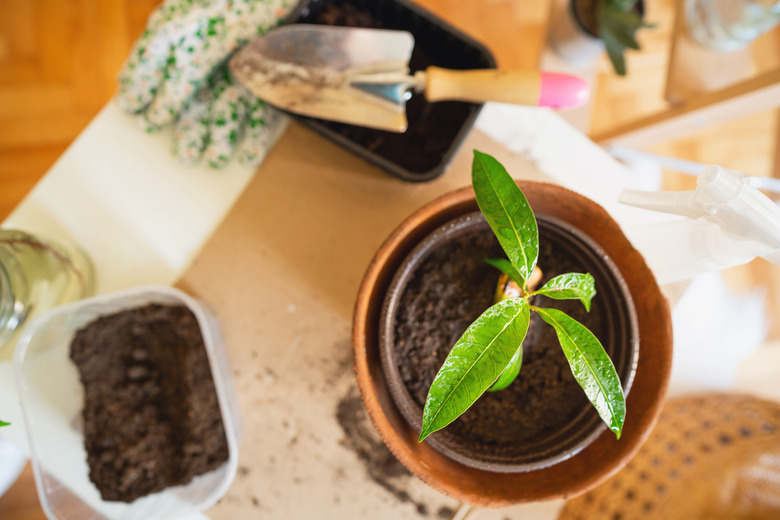Can I Grow A Mango Tree From A Neighbor's Tree?
Rather than going to a nursery or store when you decide to grow a mango tree, check and see if a neighbor has one first. A friendly neighbor could offer to give you a fresh mango seed or a few branch cuttings to start a new tree. It's also possible to grow some types of mangoes by planting a seed and then grafting part of an existing tree onto the seedling.
But don't expect overnight delight. Young mango trees take about six years to start producing fruit.
Plant From Seed
Plant From Seed
If you want to try growing a mango tree from seed, you are very likely to be successful. Mango seeds have a very high rate of germination. Remove the fruit of the mango first, then carefully cut the inner seed kernel out of its husk with a sharp knife. Get that seed into the ground as soon as possible after you remove it. Do not use a dried or old seed.
Plant the seed about 1 inch deep in potting soil with its concave side facing downward. In areas with possible fungal problems, gardeners should treat mango seeds with a fungicide before planting them. The mango seed will sprout in anywhere from eight days to three weeks, with quicker results in warm climates. Keep seedlings consistently moist and transplant them outside before their roots become pot-bound.
Create a Grafted Tree
Create a Grafted Tree
Grafting is the art of attaching one plant part, termed the scion, onto another plant's stem, termed the rootstock, and letting the two grow together. Grafting can be useful for mangoes. Since a seedling grown from a mango may not look at all like the parent plant and the fruit can be poor quality, you can plant a mango seed and then graft part of the parent plant onto the seedling.
To create a grafted mango tree, allow a seedling's trunk to become about 1/4 inch thick before grafting onto it. This will occur between six months and two years after the seed germinates. Take a young cutting of an older tree and graft it directly onto the trunk or a branch of the seedling rootstock. Several types of grafts, including veneer, shield, patch, and root grafting, work for mango trees.
Many U.S. gardeners use veneer grafting, a technique in which the gardener cuts a tapered end on the scion, removes a wedge from the trunk of the rootstock in which to fit the tapered scion edge, and then attaches the cutting to the rootstock by wrapping it in tape and sealing it with wax. Over time, the scion grows into the rootstock and becomes a living part of the tree.
Propagate From Cuttings
Propagate From Cuttings
Most people do not propagate mangoes from cuttings. It is a discouraging business because mango cuttings have a low success rate and produce plants with weak root systems. However, no law prevents you from trying to start a mango plant from a cutting. It will not hurt the parent tree as long as you take the cutting when the tree is not producing fruit.
Cuttings from mature trees work better than cuttings from young trees, although they still only have a 40 percent success rate. It can be helpful to treat cuttings with a growth regulator and either stick the cut ends in moist soil or keep them in the air under mist until they sprout roots.
